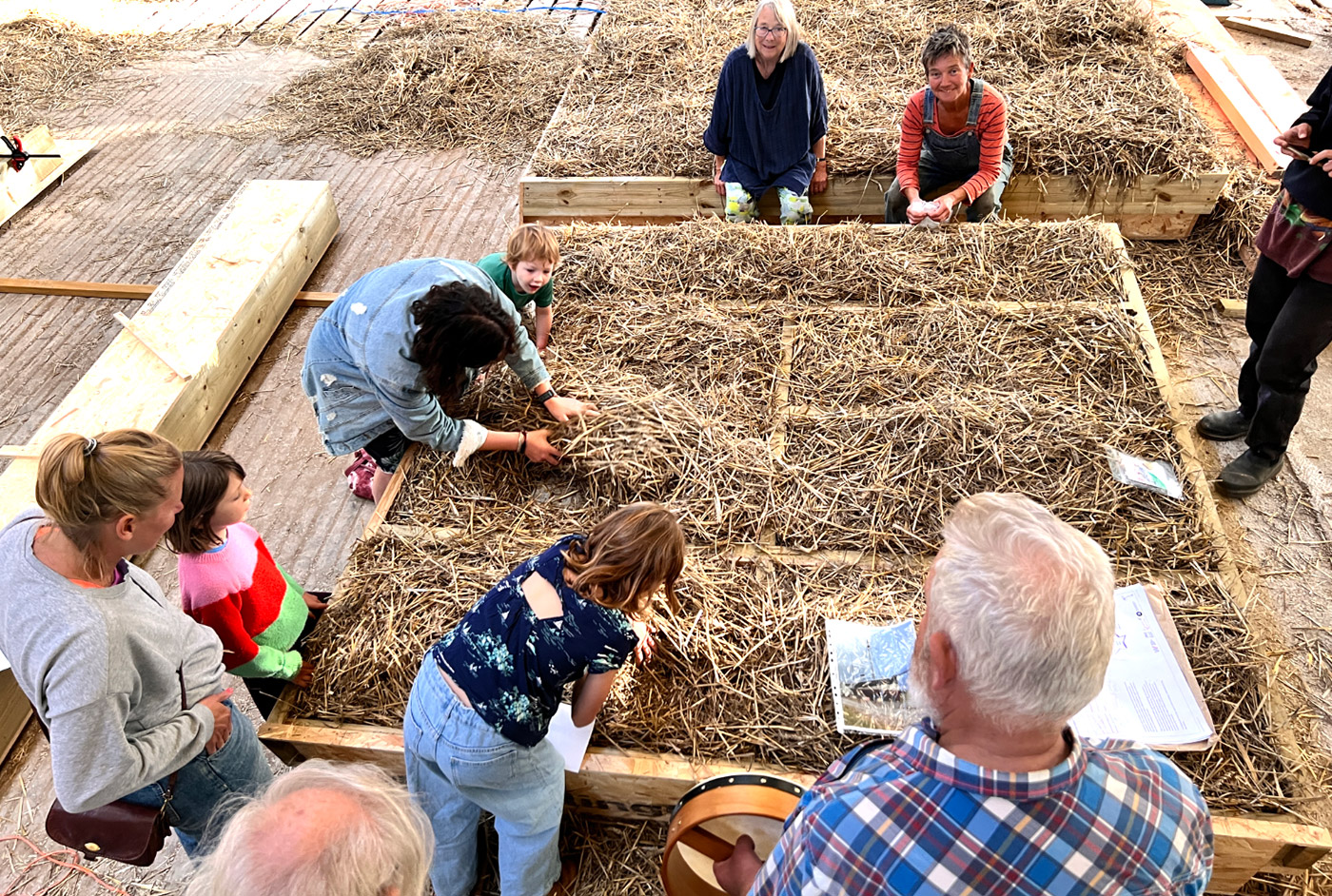Regenerative design case study
Whitby Wood is partnered with UK FIRES at Cambridge University and the University of Bath Systems and Sustainability Research Group to sponsor Charlotte’s research PhD on the sustainable supply of zero-carbon construction materials at scale in the UK using today’s technologies.
The Common House, a community gathering building in the Hazelmead co-housing development in Bridport on the UK’s south coast, was co-designed and co-built with the tenants of the community land trust Bridport Cohousing. Featuring a locally sourced timber frame, straw-bale wall panels, and concrete-free foundations, its construction was also a catalyst for long-term social engagement and ecological conservation.

Through conversations with architect Common Practice, the article examines how using local, bio-based and re-used materials, volunteer labour, and regenerative design principles plays out in practice. It also interrogates the scalability of this type of project.

Holistic Regenerative Design : the Common House by Common Practice
by Charlotte Taylor and Will Hawkins
The Structural Engineer, September 2024 … online access >

